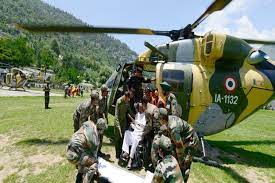When a disaster strikes, people are often left with little to no resources. This is where disaster relief organizations step in to help. These organizations are responsible for providing aid and assistance to those affected by disasters.
Disaster relief operations can be complex and often involve multiple agencies and organizations. It’s important to have a clear understanding of the roles and responsibilities of each organization involved in order to ensure that aid is provided efficiently and effectively.
Assessment of Damage
The first step in any disaster relief operation is assessment. This is conducted by various organizations, including government agencies, NGOs, and international organizations. Assessment teams will assess the damage caused by the disaster and identify the needs of those affected.
When conducting an assessment, teams will often use a variety of techniques, including aerial surveys, ground surveys, and interviews with affected individuals. This information is then used to develop a plan of action and identify the resources that are needed to provide assistance.
Provision of Aid
Once the needs of those affected by the disaster have been identified, relief organizations will begin to provide aid. This can take many forms, including food, water, shelter, and medical assistance.
Others who may need to evacuate their homes will be provided with temporary housing. This housing can be in the form of campsites with a portable toilet, temporary shelters, or even hotels and motels.
Relief organizations will also provide support to those who have lost their jobs as a result of the disaster. This may include financial assistance, job training, and other services. In some cases, relief organizations will also provide long-term assistance, such as rebuilding homes and infrastructure or providing psychological support. It’s important to note that the type of aid provided will vary depending on the needs of those affected and the resources available.
Coordination of Operations
Disaster relief operations involve multiple agencies and organizations. As such, it’s important to have a coordinated approach in order to ensure that aid is provided efficiently and effectively.
One of the key coordinating bodies for disaster relief operations is the United Nations Office for the Coordination of Humanitarian Affairs (UNOCHA). UNOCHA is responsible for coordinating the relief efforts of various organizations, including UN agencies, NGOs, and governments.
In addition to UNOCHA, there are also a number of other coordinating bodies that play a role in disaster relief operations. These include the International Committee of the Red Cross (ICRC), the World Food Programme (WFP), and the International Organization for Migration (IOM).
Each of these organizations has a specific role to play in disaster relief operations. For example, the ICRC is responsible for providing assistance to those affected by conflict, while the WFP provides food assistance to those in need. The IOM is responsible for coordinating the movement of people and providing shelter and other assistance to those who have been displaced by disaster.
Implementation of the Plan
Once a plan of action has been developed, it’s time to start implementing it. This involves putting the necessary resources in place and getting started with the relief efforts.
In many cases, the first responders to a disaster are the local community. They will often be the ones who provide the initial assistance to those affected. This can include search and rescue operations, providing first aid, and clearing debris.
As more resources become available, relief organizations will begin to deploy staff and supplies to the affected area. This may involve setting up camps, distributing aid, and providing other services. In some cases, it may also involve rebuilding homes and infrastructure.
It’s important to note that disaster relief operations are often complex and can take many months or even years to complete. However, with a coordinated effort, it’s possible to provide assistance to those who need it and help rebuild communities that have been affected by a disaster.










